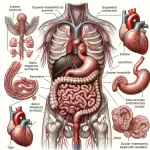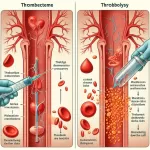What is Asperger Syndrome?
Asperger syndrome, also known as Asperger’s syndrome or simply Asperger’s, is the old name for a condition now recognized as part of autism spectrum disorder (ASD). Since 2013, Asperger’s has no longer been used as a separate medical diagnosis in large parts of the world, including the U.S.. However, many people continue to use the term in their personal lives or colloquially.[1]
People who previously might have been diagnosed with Asperger’s would generally be considered to be on the higher functioning end of the autism spectrum and may have less severe symptoms than others affected by autism. Their IQ is usually in what is considered normal or above-normal range, and their language skills may be excellent. However, they still experience challenges with communication.[2]
Autism spectrum disorder is a lifelong developmental disorder that significantly affects how people communicate and interact.[2] For some people, a diagnosis of Asperger’s may not have been made until reasonably late in childhood or adulthood, as signs of the condition may not have been immediately recognized.
Symptoms of Asperger syndrome
While they tend to vary from person to person, signs of autism spectrum disorder that may have previously led to a diagnosis of Asperger syndrome include:[3][4][5]
- A narrow range of interests or obsession with certain topics
- Difficulties with social situations and communication with others
- Speech and hearing abnormalities
- Heightened sensory sensitivity
- Placing high value on rules and routines
Symptoms such as these may sometimes be referred to as Asperger’s traits or characteristics.[6]
In addition, typical physical signs that may have previously led to a diagnosis of Asperger syndrome include:[5]
- Clumsiness
- Hypermobile (loose) joints
- Difficulties with walking, balance, handwriting, rhythm and other coordinated movements
- Difficulties with ball play
Read more about signs of autism.»
Good to know: People who might have previously been diagnosed with Asperger syndrome tend to have average or above-average intelligence but may behave insensitively in social situations. They may also appear indifferent toward their loved ones.[5]
Asperger’s in women
Autism spectrum disorder is diagnosed more often in men, and symptoms may not be recognized as quickly, if at all, in girls and women. This may lead to possible underdiagnosis of the condition, particularly in those who could be considered to be higher-functioning.
Read more about signs of autism in women »
Asperger’s in children
If a child has autism spectrum disorder, it is now usually possible to diagnose the condition by the time they are two to three years old. Signs of what might previously have been termed Asperger syndrome in toddlers and young children may include:
- Not expressing emotion or expressing only a limited range of emotions
- Difficulty understanding emotions in others
- Lack of interest in playing with other children
- Interest in one particular toy or object
Read more about signs of autism in children »
What causes Asperger syndrome?
The causes of autism spectrum disorder are not yet fully understood. However, it is thought that genetic and possibly also environmental factors are involved.[7]
Good to know: Research has shown that there is no link of any kind between vaccines and autism.
Read more about causes of autism »
Diagnosis of Asperger syndrome
Asperger’s was previously a separate medical diagnosis. However, in 2013, Asperger syndrome was classified under the umbrella of autism spectrum disorder with the introduction of the widely-used Diagnostic and Statistical Manual of Mental Disorders 5, or DSM-5.[1][8]
In the International Classification of Diseases, tenth edition, or ICD-10, another major diagnostic manual, which is used in the U.K. among other parts of the world, Asperger syndrome still appears as a diagnosis under pervasive developmental disorders. However, with the adoption and implementation of the new edition, ICD-11, this is due to change, classifying Asperger’s as part of autism spectrum disorder in line with the DSM-5.[9][10][11]
Autism spectrum disorder, whether in a child or adult, can only be diagnosed by a licensed healthcare professional. They will typically use a number of different assessments and tests to confirm the diagnosis.
Read more about autism diagnosis »
Treatment of Asperger syndrome
Treatment for any type of autism depends on the specific symptoms, needs and circumstances of the person with the condition. A number of therapies may be able to minimize symptoms and help the person to function in daily life.
Recommended therapies may include:
- Early interventions for children
- Behavioral therapy
- Skills training
Read more about autism treatment »
Asperger syndrome FAQs
u003cstrongu003eIs Asperger’s a form of autism?u003c/strongu003e
Yes. Asperger syndrome is widely recognized as part of u003ca href=u0022https://adoctor.org/conditions/autism/u0022u003eautism spectrum disorderu003c/au003e.
u003cstrongu003eCan Asperger’s be misdiagnosed as ADHD?u003c/strongu003e
In some cases, symptoms of Asperger syndrome (now classified as part of autism spectrum disorder) may be mistaken for other conditions, including attention deficit hyperactivity disorder (ADHD). Many people with autism spectrum disorder also have ADHD.u003csupu003eu003ca href=u0022https://adoctor.org/wp-admin/post.php?post=4731u0026amp;action=edit#fn7u0022u003e[7]u003c/au003eu003c/supu003eu003cbru003eu003cbru003eu003ca href=u0022https://adoctor.org/conditions/autism/#related-conditionsu0022u003eRead more about autism and ADHD »u003c/au003e.
u003cstrongu003eCan Asperger’s go away?u003c/strongu003e
Autism spectrum disorder cannot be cured, but, with appropriate support and treatment, a person with the condition can live a full life.u003csupu003eu003ca href=u0022https://adoctor.org/wp-admin/post.php?post=4731u0026amp;action=edit#fn2u0022u003e[2]u003c/au003eu003c/supu003e Various therapies may help to improve the affected person’s symptoms and how they function in daily life and society.
Associated terms used for Asperger syndrome
- Asperger’s syndrome
- Asperger’s
- AS
- Autism spectrum disorder (ASD)
- Asperger’s disorder
- Autism Speaks. “What Is Asperger Syndrome?” Accessed January 15, 2019. ↩ ↩
- Health Direct. “Asperger’s syndrome.” November, 2018. Accessed January 14, 2019. ↩ ↩ ↩
- National Autistic Society. “Asperger syndrome.” June, 2016. Accessed January 9, 2019. ↩
- National Institute of Neurological Disorders and Stroke. “Asperger Syndrome Information Page.” May, 2017. Accessed January 9, 2019. ↩
- Medscape. “Asperger Syndrome.” February 13, 2018. Accessed February 26, 2019. ↩ ↩ ↩
- Asperger’s Society of Ontario. “Common Traits.” Accessed January 15, 2019. ↩
- UpToDate. “Autism spectrum disorder: Terminology, epidemiology, and pathogenesis.” February 20, 2019. Accessed February 25, 2019. ↩ ↩
- National Center for Advancing Translational Sciences: Genetic and Rare Diseases Information Center. “Asperger syndrome.” November 15, 2017. Accessed January 15, 2019. ↩
- International Statistical Classification of Diseases and Related Health Problems, 10th Revision (ICD-10). “Chapter V: Mental and behavioural disorders (F00-F99).” 2016. Accessed January 15, 2019. ↩
- National Autistic Society. “Autism profiles and diagnostic criteria.” June 27, 2016. Accessed January 15, 2019. ↩
- International Statistical Classification of Diseases and Related Health Problems, 11th Revision, ICD-11 (Foundation). “Autism spectrum disorder without disorder of intellectual development and with mild or no impairment of functional language.” January 14, 2019. Accessed January 15, 2019. ↩
**What is Asperger Syndrome?**
**Q: What is Asperger Syndrome?**
**A:** Asperger Syndrome (AS), also known as Asperger’s Disorder or Autism Spectrum Disorder (ASD) Level 1, is a neurodevelopmental condition characterized by persistent social and communication difficulties, alongside restricted and repetitive patterns of behavior and interests.
**Q: What are the Core Symptoms of AS?**
**A:** The core symptoms of AS include:
* Difficulty with social interactions, such as understanding non-verbal cues and engaging in appropriate social behaviors
* Difficulty with verbal and non-verbal communication, including difficulty maintaining eye contact and using gestures
* Restricted and repetitive patterns of behavior, such as routines, rituals, or intense focus on specific topics
**Q: What is the Prevalence of Asperger Syndrome?**
**A:** AS is a relatively rare condition, affecting approximately 1 in 54 children in the United States. It is four times more common in boys than in girls.
**Q: What are the Causes of Asperger Syndrome?**
**A:** The exact causes of AS are not fully understood, but it is believed to be caused by a combination of genetic and environmental factors.
**Q: What are the Treatments for Asperger Syndrome?**
**A:** There is no cure for AS, but early intervention and therapy can help improve symptoms and enhance quality of life. Treatments may include:
* Social skills training
* Communication therapy
* Cognitive-behavioral therapy
* Educational support
**Q: What is the Prognosis for Asperger Syndrome?**
**A:** With appropriate support and intervention, individuals with AS can live fulfilling and independent lives. They may excel in fields that align with their strengths, such as technology, arts, or research.
**Q: How is Asperger Syndrome Diagnosed?**
**A:** AS is diagnosed by a qualified healthcare professional, typically a psychiatrist or psychologist, based on observations and evaluations of symptoms.
**Q: What is the Difference Between Asperger Syndrome and Autism Spectrum Disorder?**
**A:** AS is considered to be part of the autism spectrum, and it overlaps with other ASD diagnoses. However, individuals with AS typically have milder symptoms and better functioning in language and cognitive abilities compared to other ASD diagnoses.
One comment
Leave a Reply
Popular Articles





Asperger’s Syndrome is a neurodevelopmental disorder that affects social interaction